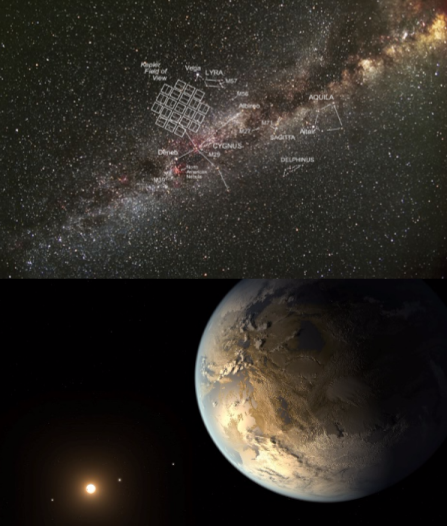Mar 17 – The Kepler Mission: Discovering Earth-sized planets in the Milky Way

At 6:30 p.m. on Thursday, March 17, the Aerospace Chapter presents Tracy Drain of NASA Jet Propulsion Laboratory. The meeting will take place in Room 109 at La Reina High School, 106 West Janss Road, Thousand Oaks, 91360.
 Have you ever wondered whether the Earth is unique? Whether there might be other Earth-sized planets in our Galaxy? And whether any of those might be in the “Goldilocks Zone” – the right distance from their parent star so that water could be liquid on the surface? Scientists have wondered about these questions for decades… and NASA’s Kepler Mission was designed, built and launched to answer them.
Have you ever wondered whether the Earth is unique? Whether there might be other Earth-sized planets in our Galaxy? And whether any of those might be in the “Goldilocks Zone” – the right distance from their parent star so that water could be liquid on the surface? Scientists have wondered about these questions for decades… and NASA’s Kepler Mission was designed, built and launched to answer them.
Kepler has been amazingly successful since it began its search in 2009; come find out about the engineering challenges of the mission and the great variety of planets that have been discovered in your galactic neighborhood!
Astronomers started to be able to detect small changes in stellar emission in the early 1990’s that indicated the presence of planets around other solar systems. These planets, called ‘exoplanets” have fueled the excitement of the aerospace community for the past 10 years because it opens our thoughts to questions about the possible existence of other worlds, like or unlike our own. A number of planets with masses near that of Earth have been detected.
The speaker will go over the technology that is used to detect exoplanets and other solar systems, and discuss some of the recent discoveries from NASA. (more background information)
Tracy Drain is a Flight Systems Engineer at the Jet Propulsion Laboratory in Pasadena, CA. Tracy was born and raised in Louisville, Kentucky, where she graduated from Waggener High School in 1993. She received a BS in Mechanical Engineering from the University of Kentucky. While at U of K, she interned at the NASA Langley Research Center in Hampton, Virginia. She went on to receive her MS in Mechanical Engineering from the Georgia Institute of Technology in May of 2000.
In her 15 years at JPL, she has participated in the development and operation of the Mars Reconnaissance Orbiter(MRO), Kepler (searching for new Exoplanets) and Juno (slated to arrive at Jupiter in July 2016). MRO is still orbiting Mars and returning valuable science data about the red planet; it also serves as a communications relay for the rovers currently exploring Mars. Tracy left MRO in the fall of 2007 to join the Kepler project, which was preparing for a March 2009 launch and a mission of hunting for Earth-like planets orbiting other stars in our Milky Way galaxy. In May 2009, Tracy joined the Juno project on the Project Systems and Flight Systems Engineering teams. Juno is currently in the Cruise Phase (on its way to a 2016 arrival in orbit around Jupiter). After arrival, Juno will study the giant planet’s gravity and magnetic fields and learn about its structure. That knowledge will help scientists learn more details about the early history of our solar system.
Tracy is currently the Deputy Chief Engineer for the Juno mission.
Tracy became interested in space as a child, and her love of Math, Physics and anything related to Space led her to pursue a career as an engineer at NASA. In her free time, she can most often be found curled up with a good book (her other favorite way to explore new worlds).
See driving directions and detailed directions to the meeting room in the Announcement.
